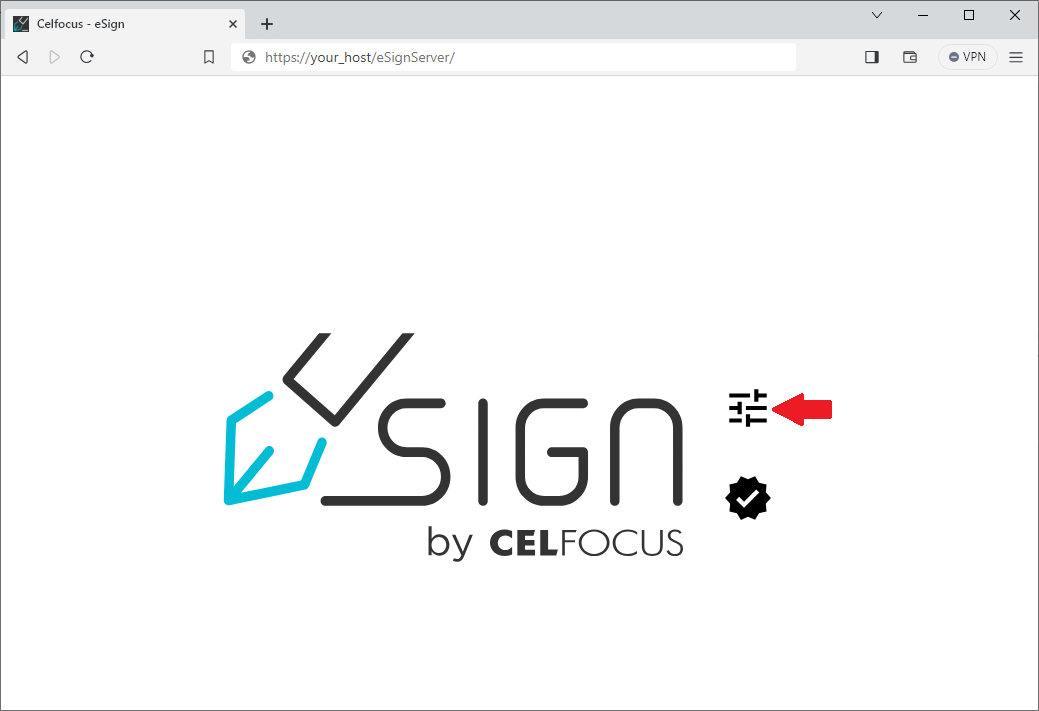Monitoring Portal
Monitoring Portal is a technical backoffice for monitoring and configuring eSign.
It is available from eSign Server landing page (https://<your_host>/eSignServer/):

| This portal is not meant to be a business backoffice, nor is it meant to be customized or extended. |
Sections
Below are all the sections present in the Monitoring Portal and its purpose.
Overview
Provides a detailed status of the eSign installation. Identifies:
-
Status of each module of the solution
-
Status of each addin of the solution and custom ones
-
Which addins are defined as default
Configurations
Allows listing all default and project specific customizations of the eSign configuration properties.
It also allows change configurations in real-time. Changes made through this portal are persistant and distributed, meaning that they will affect all eSign instances.
| Whether or not eSign immediately reacts to the configuration changes varies based on the configuration. |
Scheduler
Allows managing eSign scheduled job, and create new ones.
eSign provides a set of out-of-the-box jobs for the most common house-keeping tasks, but projects can create new eSign jobs that can be managed through here.
Analytics
Provides a simplified view of how eSign is being used, and how many documents have been signed and submitted for each year.
It also provides visual information to help you understand if you are close to exceed the contracted usage of eSign.
| This sections will is deprecated. Please install our new module eSign Portal for advanced analytics. |
Authentication
By default Monitoring Portal uses basic authentication against local users configured in eSign’s "Local Security Authentication" addin.
This means that the credentials for each user that is allowed to access this portal must be explicitly added to eSign’s configuration file.
SSO Authentication
Alternatively, since version 1.11.2, you can configure eSign to integrate an SSO.
See here how to Configuring SSO Authentication.